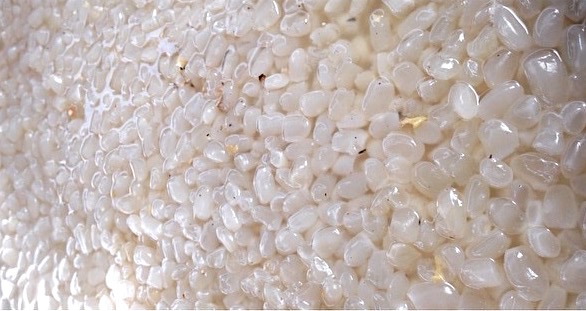Buri is the largest and most common palm found in the Philippines. Its scientific name is Corypha elata Roxb.
The plant lives up to more than 30 years. It grows throughout the country at low and medium altitudes.
The two known varieties of buri are the red or linbahon/limbahan and the white or the lupisan. These two are differentiated by the color of their petioles.
Buri buds are eaten cooked or raw in salads. The kernels of the young fruits are processed into sweets. The trunk of the buri tree contains a good quality of starch even during its growing stage. The starch is collected when the tree dies. Buri sap is one of the sources of the fermented rink locally known as tuba. The fresh sweet sap is a good source of beverage and can be made into cider when fermented. Fermentation takes place within 32 hours after the sap is collected.
Because of its varied uses, buri can be ranked next to coconut and nipa in economic and industrial importance. The leaf is the most important part of the buri palm. The petiole yields the so-called buntal fiber of which the Lucban hats are made. The coarser fibers of young buds are twisted into ropes. The mature leaves are used for covering tobacco bales, while the ribs are used for making brooms.
The raffia fiber, obtained from the unopened leaf or shoot, is used in making cloth, hats, mats and bags. This fiber is stripped from the outer part of the petiole. The stripping must be done on round, unopened leaves immediately after the leaves are cut from the palm.
The midribs of young leaves are popularly used as raw materials for lawn furniture. Aside from this, midribs are woven into high-quality hats and cigarette cases. The thickness of the midribs determines the quality of the material.
Unrelated to the above, there is a Kapampangan word buri, commonly found in the question Nanung buri mo? (What do you want?)
Kapampangan is a language totally distinct from Tagalog, in which the same question would be Anong gusto mo?
KAHULUGAN SA TAGALOG
burí: bulé
Sa wikang Kapampangan, ang burî ay nangangahulugang íbig o gusto.
Buri daka: Iniibig kita; Gusto kita




Alam nyo po kung saan pwede makabili ng seedling o buto ng buri palm? Thanks po
Ilan ang gusto mo ( growing plant or seed) , meron kami Buri Palm sa Lopez, Quezon province. You can send me an email at [email protected]. Also, how much you wanted to pay for Seed or buhay na plant..
Mag start pa lang kasi ako ng Buri, No idea ..How much do people want to pay for this Majestic, Grandeur, and Giantly beautiful Philippine Palm Tree.